A Day in the Life of a CTD Watchstander
Ruth Moorman is a PhD candidate in Physical Oceanography at the California Institute of Technology (CalTech) in Pasadena, CA. On the ship, she’s one of six CTD watchstanders prepping the CTD rosette for deployment and managing rosette sample collection during casts.
Almost all the work we do on a GO-SHIP cruise relies on Rosie, our CTD rosette, successfully carrying 36 Niskin bottles and a suite of sensors down from the sea surface to (almost) the seafloor and back up again. When the rosette enters the water, these Niskin bottles are empty, but when the rosette comes back on deck, the Niskins are each filled with ~10.2 L of seawater from specific target depths in the water column. Our main job as CTD watchstanders is to make sure this happens! Today, I’ll take you through what we get up to before, during, and after a typical cast.
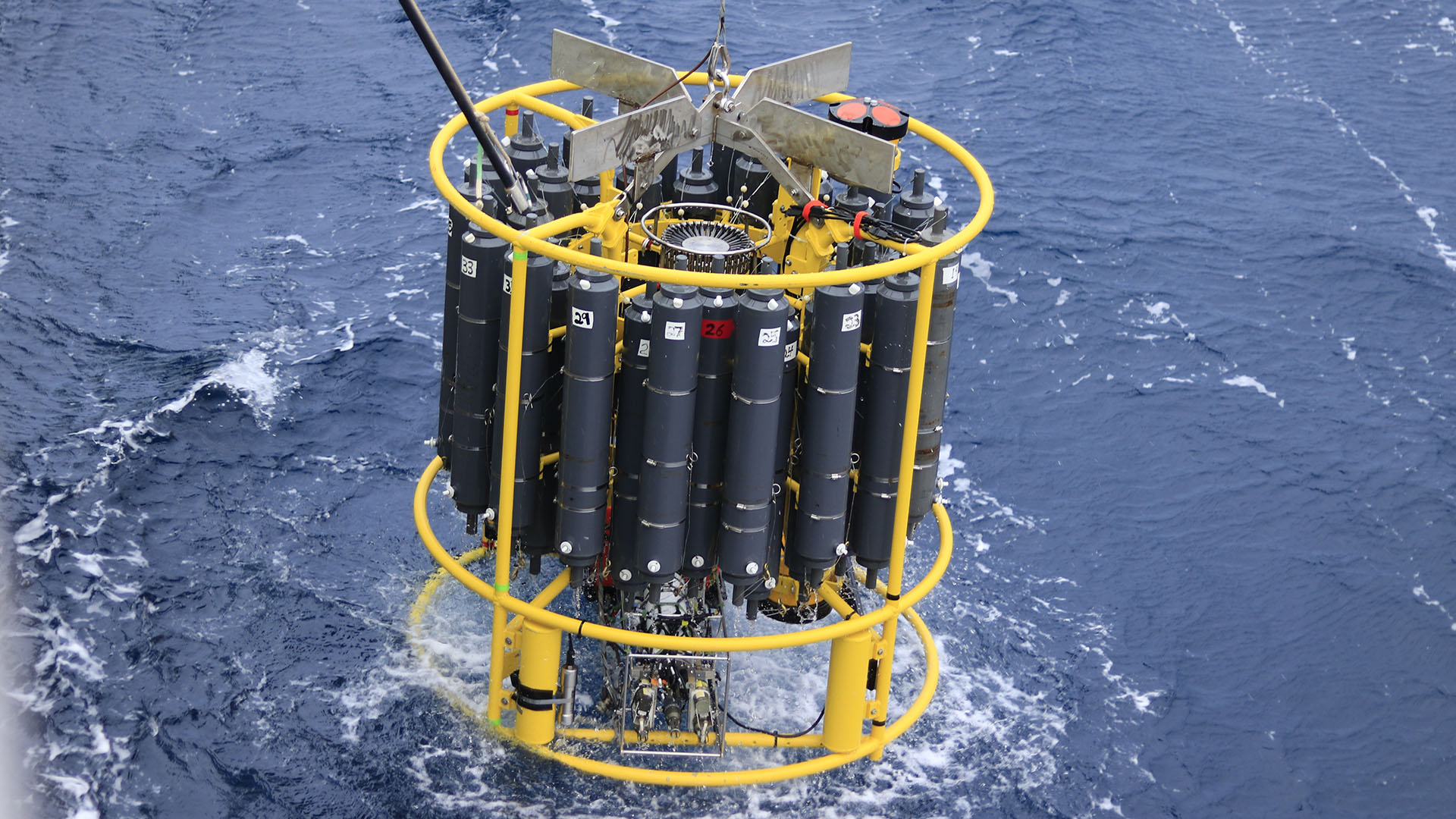
Rosie the CTD rosette is recovered at our first station in the Southern Ocean.
For the watchstanders, work on a cast typically starts about 30 minutes before the ship is positioned on station. At this stage, we don waterproof gear and head out to the staging bay to prep the rosette for the upcoming cast. This involves dumping out any remaining water left in the Niskins from the previous cast (a very splashy process!), securing all Niskin bottles in an open position (takes some muscle), closing all valves and spigots, and checking over the rosette for any maintenance needs.
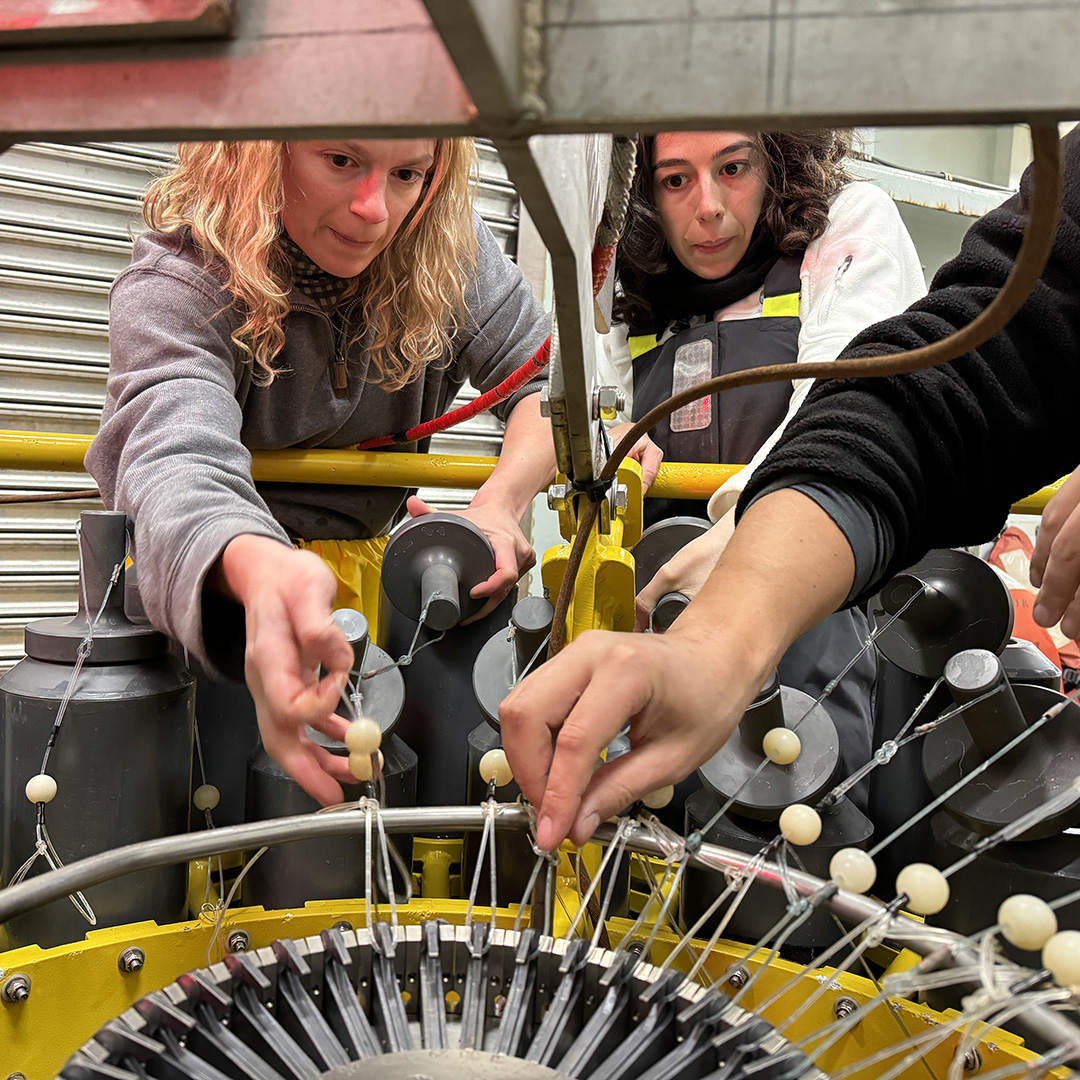
Each Niskin is held open by a lanyard looped around a hook in the central carousel.
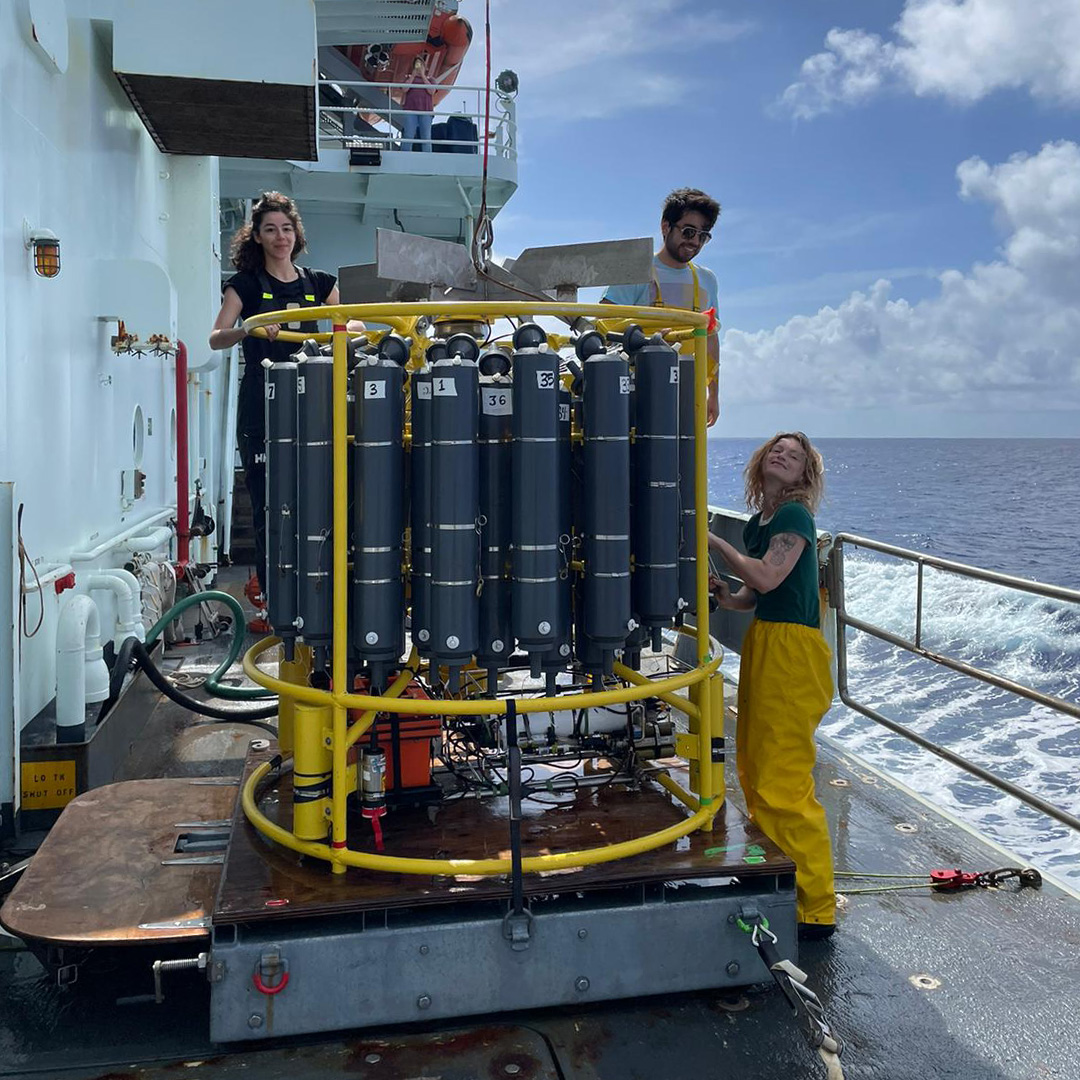
Ruth (far right) prepares the CTD on the deck of the R/V Thompson with fellow watchstanders Maria Sanchez Urrea (left) and Tatsu Monkman (center) (Photo by R. Bremer).
Once the rosette is prepped and the ship is maneuvering onto station, the deck team takes over in the staging bay and starts moving the rosette out on deck ready for deployment. The watchstanders’ role then moves to the computer lab where we coordinate (over radio) with the deck crew and winch operator to get the rosette turned on, in the water, and heading down to our target profile depth. As the rosette is lowered through the water column, we receive and monitor real time data from the numerous onboard sensors (including those for pressure, temperature, conductivity/salinity, oxygen, fluorescence/chlorophyll, and turbidity) both to check for issues and note interesting features. As we start to approach the anticipated seafloor depth, we closely monitor input from the rosette’s downward facing acoustic altimeter and coordinate with the winch operator to stop our decent when the rosette is 10 m above the seafloor.
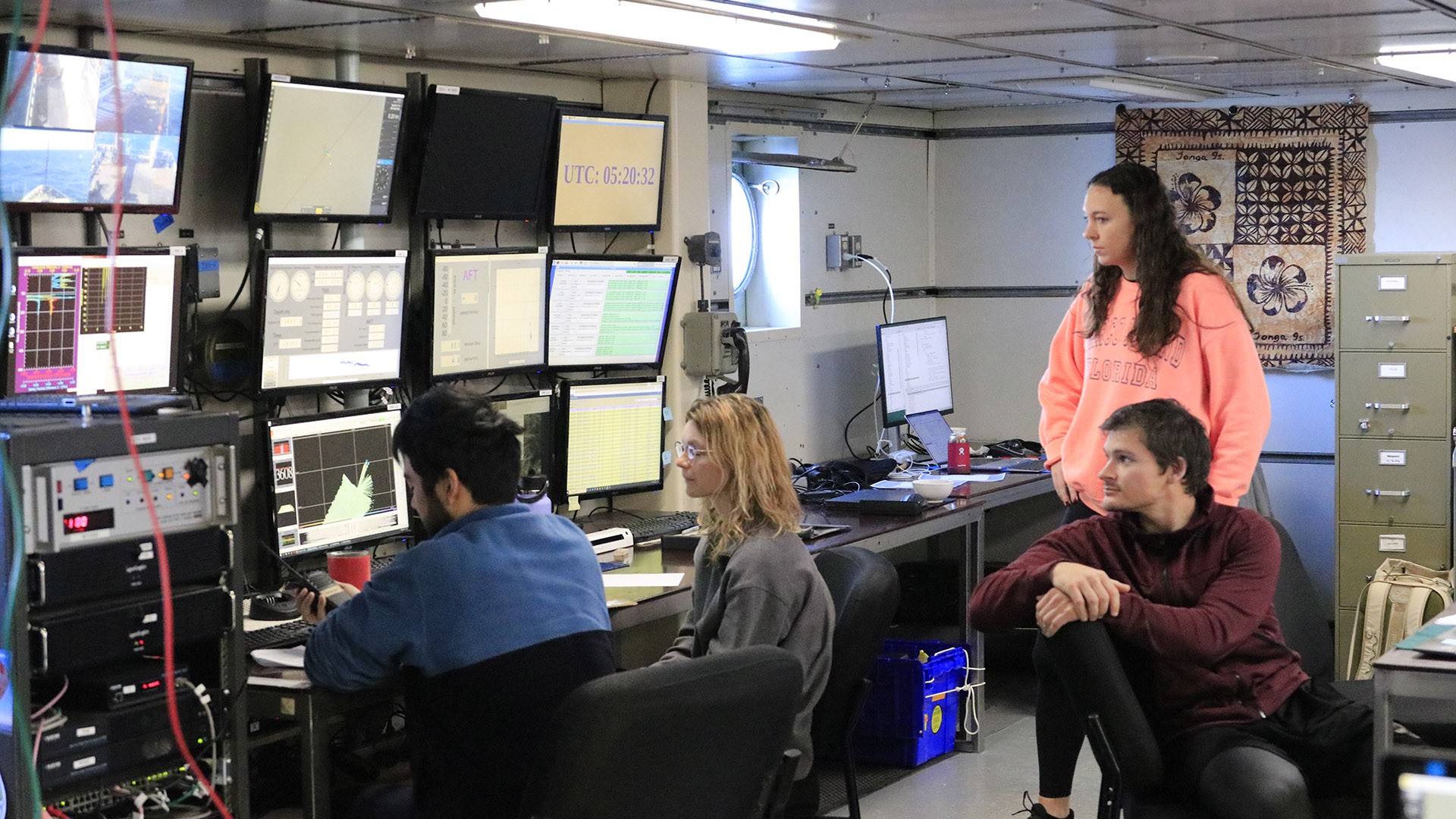
Ruth and Tatsu monitor the CTD as it progresses through the water column while Co-Chief Scientist Katelyn Schockman and Biologist Rob Bremer look on.
On the way down, all 36 Niskin bottles are held open at both ends by a series of lanyards connected to a central carousel, allowing seawater to simply flow through the Niskins as the rosette drops through the water column. On the way back up, we watchstanders coordinate with the winch operator to pause the rosette’s ascent at our target sampling depths and trigger the carousel to rapidly close Niskins, one by one, trapping seawater from our target depths inside so it can be brought onboard for analysis. Depending on the depth of our profile and environmental factors, this whole process of sending the CTD down and bringing it back up while firing Niskins can take as little at 30 min (short Bio Casts to 200 m) or as long as 5 hours (>4000 m casts in high heave conditions)!
Once the CTD rosette is back on board and in the staging bay, I’ve tended to act as a Jill-of-all-trades, picking up slack wherever needed. The variety has been great fun! Over the course of the cruise, I’ve collected samples for 14C, Dissolved Organic Carbon (DOC), salts, Alkalinity, pH, Dissolved Inorganic Carbon (DIC) and a full suite of variables from the Bio Cast. I’ve also acted as “sample cop” whenever Co-Chief Scientist Katelyn couldn’t be in the staging bay, which involves making sure everyone follows their sampling plans and samples in the correct order with appropriate spacing for gas sensitive variables (CFCs, oxygen, DIC, and pH). Sometimes I even DJed—CTD watchstanding takes many skills!

Collecting water from a Niskin after a cast.
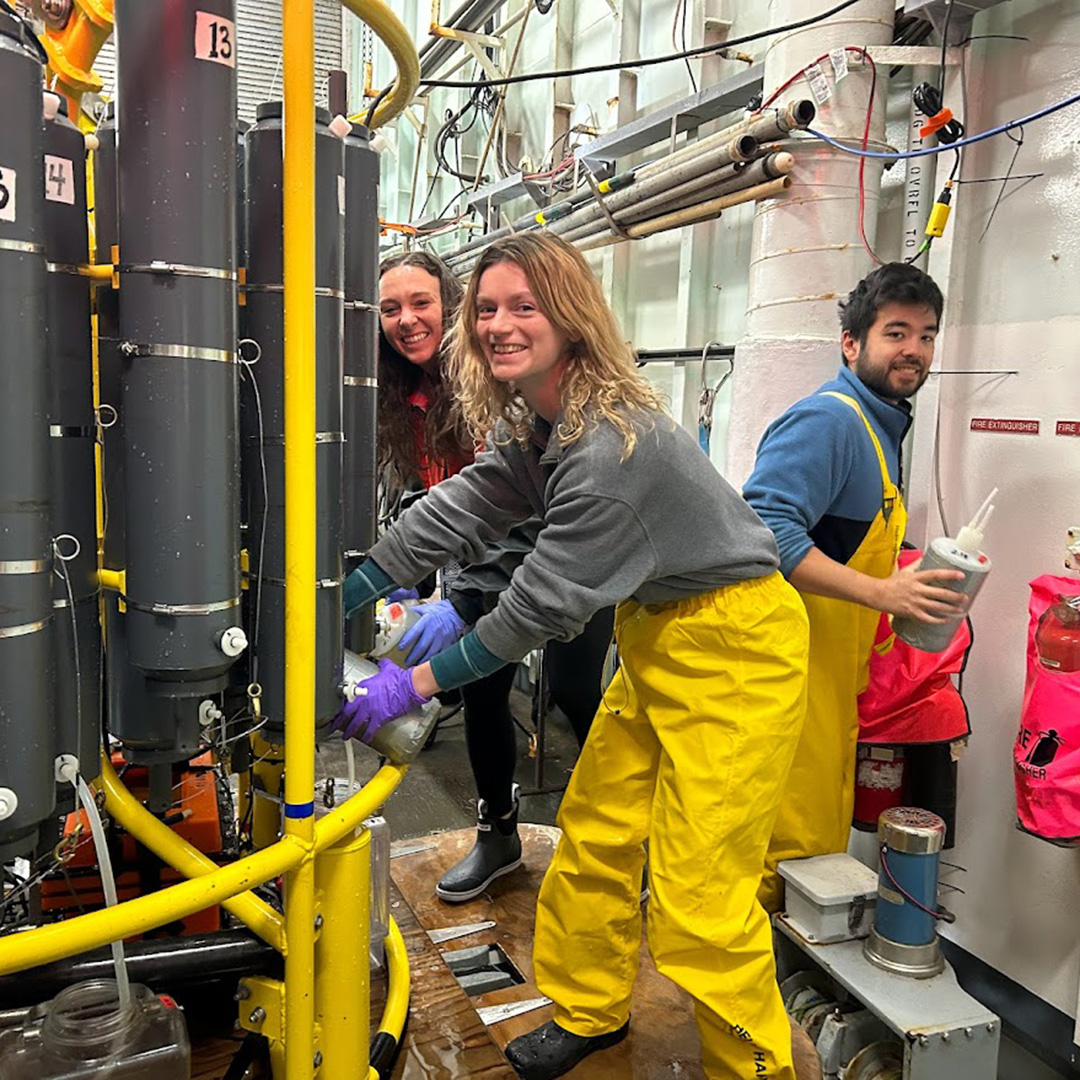
Sampling after a Bio Cast with Katelyn and Tatsu (Photo by K. Schockman).
When off shift or on break, my downtime ship activities will probably sound familiar to any grandparents reading! I’ve taken up knitting (made myself a neckwarmer, great for our high latitude stations!), done the New York Times crossword with my buddies pretty much every day, played more cards than I’ve done in years, and read books out on the deck when the weather allowed. Throughout the cruise I’ve also been crocheting a “temperature blanket” as a memento of the trip, I crochet two stripes per day for the maximum and minimum air temperature, which varied very widely between >40°C days at port in Fremantle to <-2°C on the Antarctic continental shelf! I’m originally from Australia (the only Aussie on the ship) and study ocean processes on the Antarctic continental shelf for my PhD, so linking these two important places to me both with this trip and visually in the blanket has been fun and meaningful.
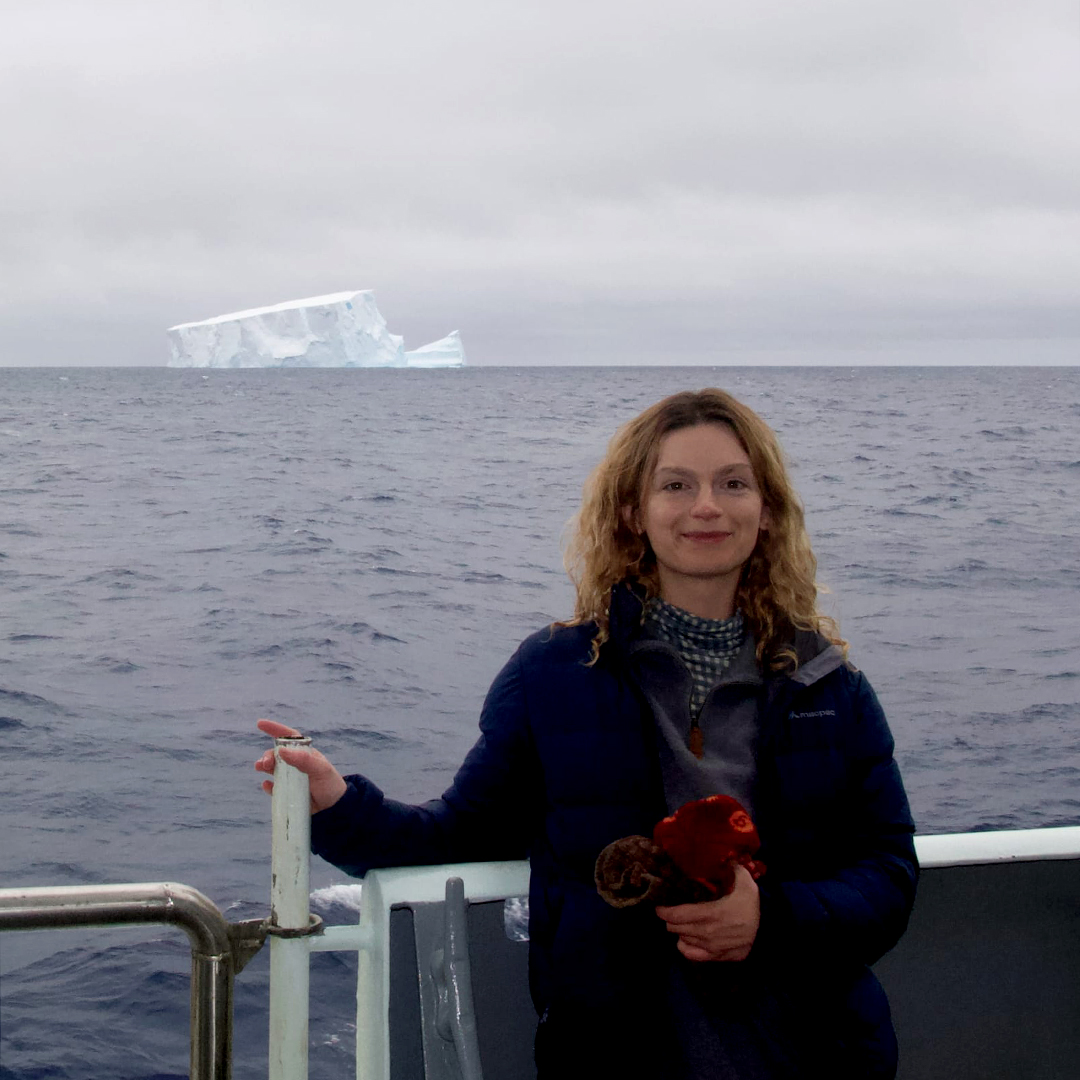
Marveling at one of the many icebergs we saw in the Southern Ocean (Photo by M. Thrasher).
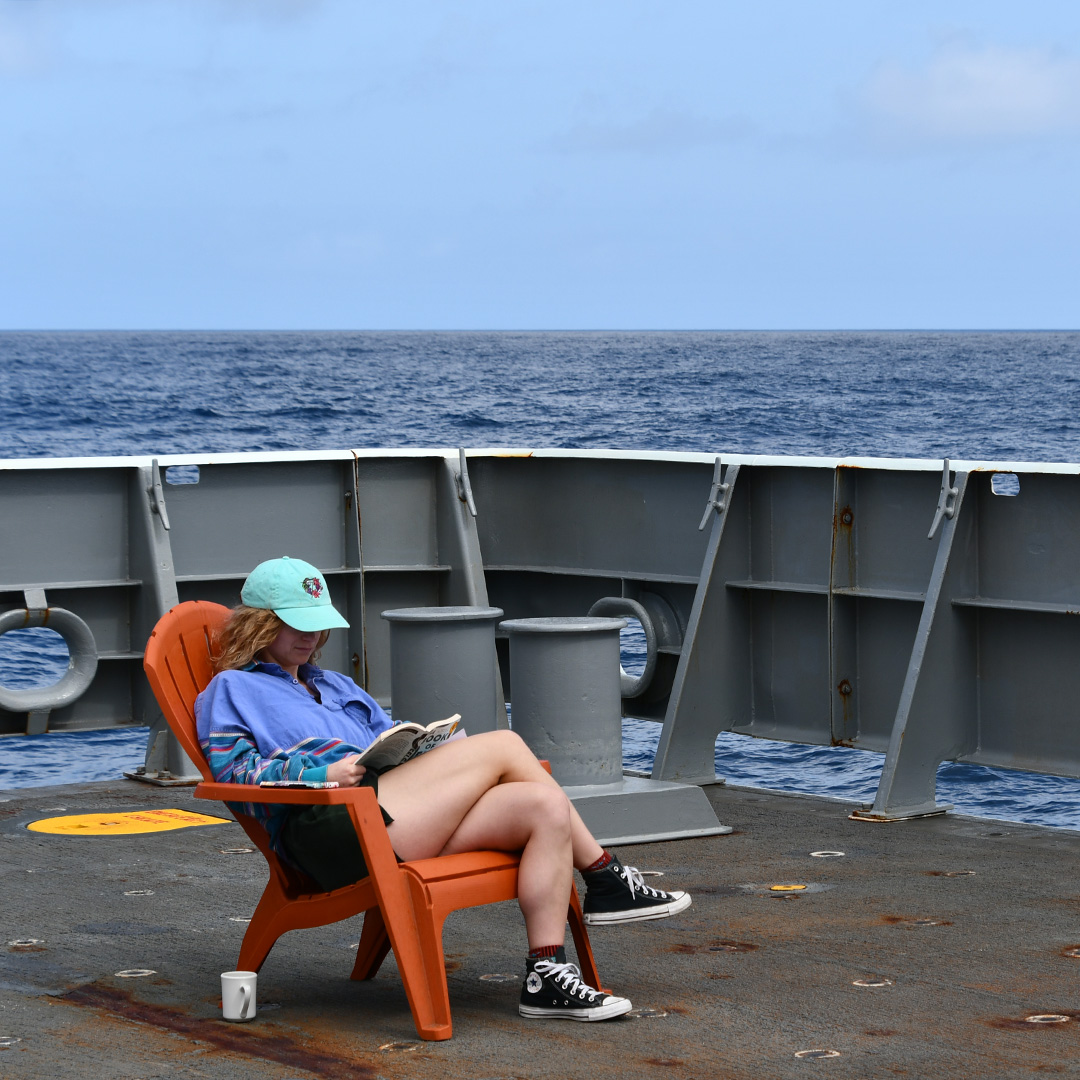
Enjoying some reading time out in the sun (Photo by L. Cimoli).
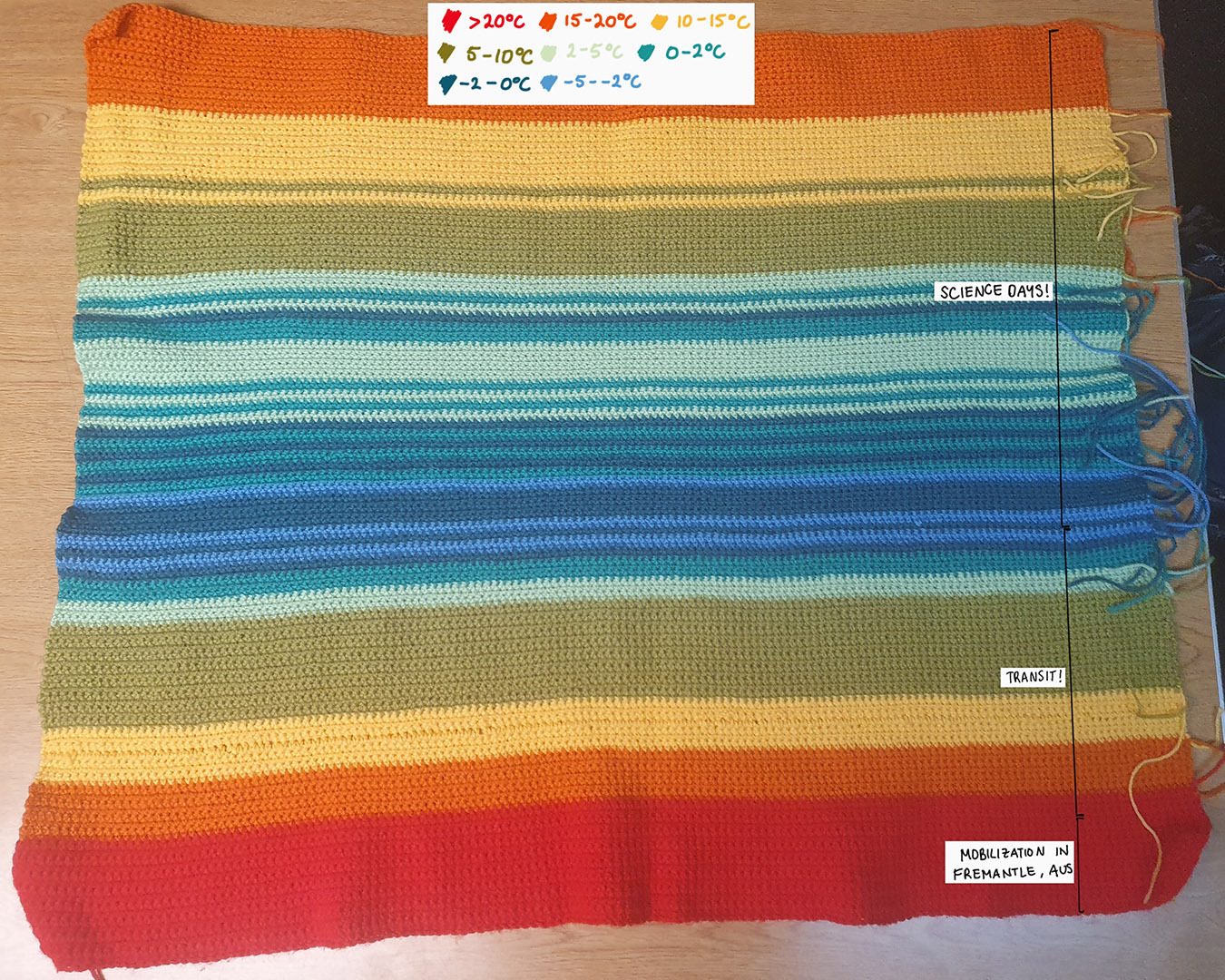
Ruth’s temperature blanket, reflecting the temperature of our journey (Photo by R. Moorman).
- Expedition Logs
- 2024 GO-SHIP I08S
- I08S Intro
- Float Checks
- Alphabet Soup
- Trieste
- Weekly Update #1
- Nurse Jennie
- Raphael
- Jess – Salts
- Fishstick!
- Cora – pH
- Swampii
- Southern Ocean
- Seawolves Explore
- Ferruccio
- Abby – pH
- Belmont Bullkelp
- Onboard Sampling
- Vincent – Dissolved Oxygen
- Elisa – Dissolved Oxygen
- Marshal – Alkalinity
- Ruth – CTD
- Vic – DOM
